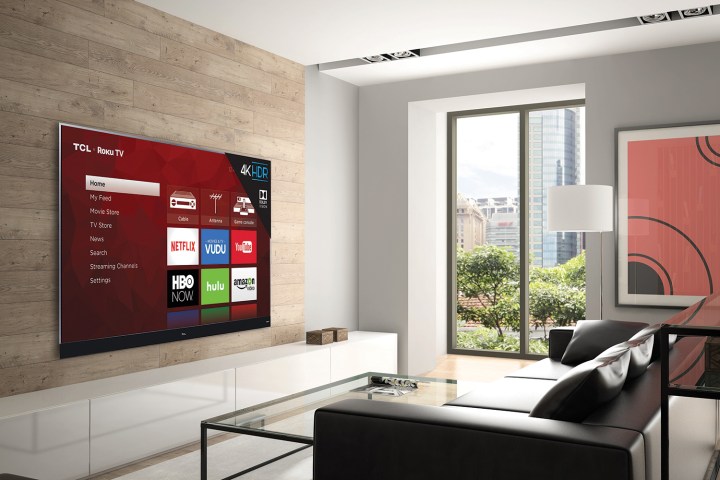China-based TV manufacturer TCL is clawing its way toward becoming the No. 1 TV maker in the U.S., and it may just get there. It’s a steep hill to climb considering the company faces stiff competition from the likes of Samsung, LG, and Vizio. But as NPD Group recently reported, TCL is the fastest growing TV brand in the U.S. — thanks in part, no doubt, to rave reviews of its stellar and affordable P-Series TV — and with the Thursday, October 5 announcement of the monstrous TCL 75-inch C-series 4K Roku TV for just $2,000, the company is in a better position than ever to clinch the pole position.
The picture
The new 75C807 model will be the largest TV TCL has produced to date and the largest Roku TV on the market. Like the 55-inch and 65-inch C-series models already sold by TCL, the 75C807 sports edge-lit backlight technology which affords the series its strikingly thin design. The panel supports 4K Ultra HD resolution, standard HDR10 support, Dolby Vision support, and expanded color gamut approaching cinema color standards.
Exclusively for the 75-inch C-series model, TCL is adding motion processing for the first time. The company calls it Natural Motion 480, and claims the feature can be adjusted to provide just a little motion smoothing to calm down judder when watching 24 frame-per-second (FPS) movies, but also to keep fast-moving sports for suffering from motion blur. Typically, this kind of motion-smoothing software tends to make movies look artificial (called “soap opera effect”), but TCL hopes the sliding scale will offer something helpful to everyone.
The sound
For sound, the 75C807 behemoth features four integrated forward-firing speakers as part of a system TCL calls “XL Theater Audio.” Like an integrated soundbar, the audio system aims to deliver the sort of high-impact, stereo-separated sound not typically heard in modern flat-panel televisions.
The experience
TCL’s use of Roku as its TV’s operating system comes with all sorts advantages, but the recent introduction of Roku OS 8 makes these TVs all the more desirable. With Roku OS 8 on board, not only will the 75C807 offer quick and easy access to streaming apps like Netflix, Amazon Video, and Hulu alongside live TV, it will fold in several new helpful features.
New to Roku OS 8 is a programming guide which will show up to 14 days of live, over-the-air (OTA) TV programming, available with the simple addition of an HD antenna. What’s more,

Roku OS 8 also makes voice control more powerful with the ability to change inputs, switch TV stations, launch an app, and even turn on the television with voice commands.
Finally, those who subscribe to cable or satellite TV services and are thereby entitled to premium access to so-called “TV everywhere” apps will be pleased to know they only need to sign in to authenticate one app, and Roku will automatically unlock access to any other eligible apps.
The TCL 75-inch C-series will be available to purchase in time for the holidays, according to TCL, and will be sold at popular retailers, including Amazon, nationwide.





